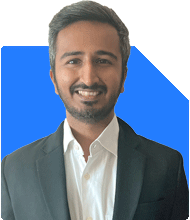Ramalingam Kalirajan |10906 Answers |Ask -Follow
Mutual Funds, Financial Planning Expert - Answered on Oct 24, 2024
He has an MBA in finance from the University of Madras and is a certified financial planner.
He is the director and chief financial planner at Holistic Investment, a Chennai-based firm that offers financial planning and wealth management advice.... more
.jpg)
I am 71 years old man and I want to invest or good returns of my 20 lac . Please suggest me
Asset Allocation: Balancing Safety and Growth
Splitting the investment amount across various asset classes ensures stability.
A balanced allocation reduces risks and ensures some steady returns.
A mix of debt and equity options can be ideal to meet liquidity and income needs.
Recommended Split:
60-70% in safe debt instruments for stability.
20-30% in equity-oriented instruments for moderate growth.
5-10% in liquid instruments for emergencies.
Debt Instruments for Stability and Safety
Debt mutual funds provide more flexibility than fixed deposits (FDs).
These funds ensure stable returns without locking your money.
They also have better post-tax returns for those in higher tax slabs.
Monthly Income Plans (MIPs) in mutual funds can generate regular payouts.
Conservative hybrid funds are another choice, combining debt with some equity.
Short-term debt funds can work well for liquidity while offering moderate returns.
Equity Funds for Growth with Controlled Risk
Actively managed mutual funds with a small allocation can give higher returns.
This exposure helps offset inflation over time.
Large-cap and balanced advantage funds are safer options for senior investors.
Avoid direct equity investments, as they carry higher risks and demand constant monitoring.
You can invest through a Mutual Fund Distributor (MFD) linked to a Certified Financial Planner (CFP).
This approach offers expert advice and monitoring.
Liquid Funds for Emergency Needs
Keeping some money in liquid mutual funds ensures quick access.
These funds offer easy withdrawal, usually within 24 hours.
Unlike fixed deposits, you don’t need to break the whole investment if only part is needed.
Avoid holding too much in savings accounts, as they offer low returns.
Liquid funds strike a good balance between liquidity and returns.
Income Generation: Plan for Regular Cash Flow
Systematic Withdrawal Plans (SWPs) from mutual funds can generate monthly income.
SWPs allow you to withdraw only a fixed amount regularly.
This prevents you from exhausting your corpus quickly.
Monthly Income Plans (MIPs) can also provide stable income, though payouts depend on market performance.
Tax Efficiency: Reducing Tax Liabilities
Debt mutual funds now have the same tax treatment as fixed deposits.
Gains are taxed according to your income tax slab, whether long or short-term.
Equity mutual funds’ long-term gains above Rs 1.25 lakh are taxed at 12.5%.
Plan withdrawals carefully to minimize tax outflows.
SWPs from equity funds help reduce tax, as only the gains are taxed.
Health Insurance and Contingency Planning
Ensure that you have sufficient health insurance coverage.
Healthcare costs can rise with age, and good coverage reduces financial strain.
Personal health insurance offers more control than depending solely on employer-provided policies.
Keep a part of your liquid funds for unexpected medical expenses.
It’s better to avoid exhausting your core investments for such needs.
Avoiding Index Funds and Direct Funds
Index funds may seem appealing, but they lack the flexibility of actively managed funds.
Active funds aim to outperform the market, making them a better choice for long-term returns.
Professional fund managers can rebalance portfolios during market volatility.
Direct funds may have lower costs, but regular funds offer valuable advisory services.
Investing through an MFD tied to a CFP provides better monitoring and insights.
This professional support helps you manage risks effectively.
Estate Planning: Securing Wealth for the Next Generation
Review your investments and ensure nominees are correctly registered.
Consider creating a will to avoid complications for your heirs.
If needed, explore trusts or other instruments to distribute your wealth smoothly.
Reviewing Investments Regularly
Although you seek stable returns, it’s important to review your portfolio periodically.
A CFP can help you adjust the portfolio as market conditions change.
Reviewing at least once a year ensures the investments remain aligned with your goals.
Final Insights
Your investment strategy should aim for both stability and moderate growth.
Debt instruments ensure safety, while equity investments provide growth potential.
Liquid funds offer flexibility for emergencies, ensuring peace of mind.
A Certified Financial Planner can offer ongoing advice and portfolio reviews.
This approach helps you stay on track and meet your income needs comfortably.
Best Regards,
K. Ramalingam, MBA, CFP,
Chief Financial Planner,
www.holisticinvestment.in
https://www.youtube.com/@HolisticInvestment
You may like to see similar questions and answers below
Hemant Bokil | Answer |Ask -Follow
Financial Planner - Answered on Jan 31, 2023
Ramalingam Kalirajan |10906 Answers |Ask -Follow
Mutual Funds, Financial Planning Expert - Answered on Apr 04, 2024
Vivek Lala |323 Answers |Ask -Follow
Tax, MF Expert - Answered on Mar 24, 2024
Ramalingam Kalirajan |10906 Answers |Ask -Follow
Mutual Funds, Financial Planning Expert - Answered on Jul 31, 2024
Reetika Sharma |432 Answers |Ask -Follow
Financial Planner, MF and Insurance Expert - Answered on Sep 19, 2025
Ramalingam Kalirajan |10906 Answers |Ask -Follow
Mutual Funds, Financial Planning Expert - Answered on Dec 19, 2025
Nayagam P P |10859 Answers |Ask -Follow
Career Counsellor - Answered on Dec 19, 2025
Ramalingam Kalirajan |10906 Answers |Ask -Follow
Mutual Funds, Financial Planning Expert - Answered on Dec 19, 2025
Ramalingam Kalirajan |10906 Answers |Ask -Follow
Mutual Funds, Financial Planning Expert - Answered on Dec 19, 2025
Ramalingam Kalirajan |10906 Answers |Ask -Follow
Mutual Funds, Financial Planning Expert - Answered on Dec 19, 2025
Radheshyam Zanwar |6751 Answers |Ask -Follow
MHT-CET, IIT-JEE, NEET-UG Expert - Answered on Dec 19, 2025
Radheshyam Zanwar |6751 Answers |Ask -Follow
MHT-CET, IIT-JEE, NEET-UG Expert - Answered on Dec 19, 2025
Samraat Jadhav |2514 Answers |Ask -Follow
Stock Market Expert - Answered on Dec 18, 2025
Reetika Sharma |432 Answers |Ask -Follow
Financial Planner, MF and Insurance Expert - Answered on Dec 18, 2025
Reetika Sharma |432 Answers |Ask -Follow
Financial Planner, MF and Insurance Expert - Answered on Dec 18, 2025


























